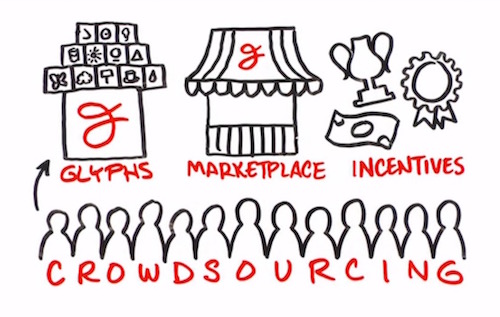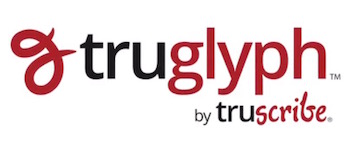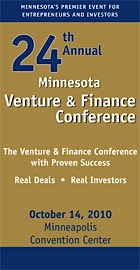{NOTE: I originally wrote this article for a new publication called Starting Up North, which launched in early June 2019.]
Pretty much every Minnesota company on the Fortune 500 list began as a startup, as hard as that may be to imagine today. Sure, some were spinouts of large, established firms, such as Target, originally an internal startup at then Dayton-Hudson Corporation back in the 1960s.
But think 3M in the early 1900s, rising from the obscurity of the Northern Minnesota mining industry, or Medtronic, which began as a repair shop in the 1950s in Earl Bakken’s garage in Northeast Minneapolis – both giants in their respective industries today. (Medtronic dropped off the list in recent years only because it’s now headquartered in Ireland.)
Obviously, the startup-to-Fortune 500 story can take decades to happen. And many, many American firms that reached this coveted designation have faded away over the years. But one wonders when another scrappy little Minnesota company might break out and hit the big time.
But should we even care? It’s just a list. Nonetheless, it’s fun to imagine… what startup out there could possibly be the next, however many years it might take?
What Even Qualifies a Company to Be On the Fortune 500 List?
Despite what it may seem, the Fortune 500 isn’t simply a list of the 500 largest firms of all types. Minnesota has at least one giant — Cargill, the largest privately-owned company in the U.S. – that’s never on the list. Surprisingly, there is no set amount of revenue that gets a company onto the list — though companies are ranked by revenue. (The threshold for making the list is different every year; for 2018, it was $5.4 billion in revenues – 6 percent more than 2017.) It’s a list of only American companies, meaning incorporated in and operating in the U.S. The companies can be public, private, or even cooperatives, but they must file financial statements with a government agency to qualify. (Cargill doesn’t, but we have other Minnesota companies that do and have made the list, even though they are not publicly traded: CHS and Securian. But, it should be noted, Securian dropped down on the list that just came out; it’s now #506.)
Profits aren’t part of the criteria. Crazily, you can lose money and make the list, even tons of it (looking at you, Tesla). Fortune magazine, which publishes the list annually, says its other criteria focus on a company’s long-term goals and adaptability. They rightfully point out that the road to the 500 will take a lot of years, and whatever your company is currently offering probably won’t get you there.
So, who might make it someday from Minnesota? What industry might they represent? First, let’s look at the industry sectors Minnesota Fortune 500s represent today:
• Healthcare/Medtech: 2
• Retail: 2
• Logistics/Transportation: 1
•¨Insurance: 1
• Food/Agriculture: 6
• Manufacturing 2
• Banking/Financial: 3
• Energy/Utilities: 1
• Water/Hygiene/Food Safety: 1
Notice not a single one is classified as “technology” in Wall Street terminology (meaning IT, software, computers, semiconductors), though the current Fortune 500 list has many such companies — by my quick count at least 18. Sure, looking at it another way, what company today would not be considered a technology company? It runs through everything. But the fact remains, Minnesota is not a technology company hotbed anymore. And that causes people to wonder how that happened, with our long history in the state as an information technology innovator. It’s been since the mid-1980s that a computer-related firm in Minnesota made the list. That would be Control Data (where I was a manager early in my career, in that company’s glory years). It broke itself up long ago, though its legacy remains strong. It spawned literally thousands of startups over its four decades of existence, scattered all over the country. At least three books have been written about Control Data and the era of tech dominance in our state.
Steve Grove, Minnesota’s new Commissioner of the Department of Employment and Economic Development (DEED), wrote about the state’s computer legacy in an excellent column in the StarTribune in January: Reboot required (or seeking a Minnesota Miracle 2.0).
Here’s the closing line: “With pride in our entrepreneurial roots and a bold vision for the future, Minnesota can become a nation-leading tech hub once again.”
Let’s Start With a Counterpoint
When seeking commentary for this article, I especially wanted to hear from Tom Kieffer, one of the most prolific and successful serial tech entrepreneurs in our state. He’s had four successful exits in his career in the IT sector, the latest being the sale of a majority interest in Virteva just this spring. (A company I had a role in helping him launch in 2005.)
“I think the question you raise with this article is the wrong one,” he said. “It’s an outdated measure of success. I think history will show the pursuit of Fortune 500-ness in this day and age is a fool’s errand.”
He went on: “The real question is, how well is Minnesota positioned to build the companies — and jobs, careers, communities, and clusters — of the future?”
That future, he said “lies somewhere between the gig economy and the GE-style conglomerates of the past — and it’s certainly closer to the small end of that spectrum. The world is getting smaller, and we’re not going back –- ask any millennial or Gen-Xer.”
Look at the history of the Fortune 500 phenomenon, Kieffer said. “A major benefit, and definition, of being one of these companies is access to ‘cheap’ public funding. But it’s really not that cheap anymore. There are many ways to access capital these days, from Kickstarter to private equity in addition to legacy VC. And there are plenty of exit paths for startups beyond selling to a public company.” (Exit alternatives he knows well.)
Many of the Fortune 500 companies created in the past 10 years are the so-called ‘unicorn’ style, he noted — such as Amazon, Facebook, and Uber. “However, I think the public financing approach is going out of fashion now, just as the current wave of unicorns goes public.”
So much for Fortune 500 (and IPO) adoration.
Running the Numbers
The quantity of Minnesota firms on the Fortune 500 list has remained relatively stable over several years. I can remember it being as high as 21 or 22, then it dropped to 17 in 2016. In 2018, it went up to 19. On the most recent list, just published in May 2019, we’re back down to 17 Minnesota companies. So we’re hanging in — somewhat.
Minnesota DEED says on its web site that our state ranks third in Fortune 500 companies per one million people. And, by number of firms on the list, our state ranks #10 in the U.S. Yes, Minnesota represents well.
How many more Minnesota firms are on the second 500 of the Fortune list? Don’t get excited: only six more. So, a total of 23 Minnesota firms now on the Fortune 1000, as of their 2018 list (just published). What we’re asking in this article is, are there growing companies in our state that might be among the 2000 or 3000 largest right now – or maybe an upstart we’ve barely heard of yet – who could be capable of rising up over the years (decades?) to become dominant corporate leaders in Minnesota?
Ecosystems Matter
Does Minnesota have an ecosystem that can ensure we will continue to produce Fortune 500 companies?
“We do have some things in our favor related to eventually producing additional Fortune 500 companies — such as a patient workforce,” said Mac Lewis, who’s been CEO of a public company (Computer Network Technology, acquired by McData in 2005). He’s also a venture capitalist with Sherpa Partners, was CEO of Field Solutions (acquired by Field Nation), and currently serves as CEO of Phocus.io. In addition, he’s a longtime board member of the Minnesota High Tech Association. “Employees here tend to stick with a company.”
He notes that many Minnesota startup companies do have experienced leadership and a culture for producing value, with revenue-based business models – that is, “a real product or service, versus plans to capture eyeballs and then do advertising.”
Other benefits of our business community, according to Lewis are “a skilled workforce, experienced leaders and managers, high-caliber support in the legal, regulatory, and financial areas, and many mentors.”
Phil Soran has been a CEO and cofounder of two successful Minnesota tech firms, one being Compellent, which went public and was later acquired by Dell (in 2010) for close to $1 billion. (In essence, it almost became our own little unicorn.) “Minnesota does have attributes that could produce more Fortune 500 companies in the future,” he said — role-model companies with experienced management not being the least. “We tend to build on sustainable business models as opposed to hyped trends. That’s the foundation of a company that can be a future industry leader.”
How have things changed over the years in Minnesota? “It’s much more accepted now to be an entrepreneur — that was not the case previously,” Soran said. “This is very important. We now need more large successful startups to role model success in this new environment. I do see some current growing younger businesses in our state that could grow into Fortune 500 companies.” (No, I couldn’t get him to name them.)
“It’s a hard task to accomplish,” Soran added, “but made easier as many Fortune 500s are being acquired, providing openings for new members.”
Soran said we’re very lucky to have so many “large, ethical companies in a variety of industries providing very good employment opportunities.” But he sees two issues: “I do not think our community and government appreciate their impact nearly enough.” Also, though he sees lots of “spinoffs” that alumni of these companies have started, “many of them are not as visible as their success might dictate.” Too shy? Too Minnesota-nice to brag?
What Are We Lacking?
So, all the positives aside, where does Minnesota fall short?
According to Lewis, “Relative to other parts of the country, Minnesota does not have the entrepreneurial personality to ‘swing for the fences’ — that is, leadership and vision for a company that can paint a big picture of its future, in which it can be the next ‘unicorn’ with a market value in the billions.”
But there’s a bigger problem, he said: “There’s less local venture leadership and other financing for companies that may need mid-to-high hundreds of millions of dollars of funding to support large, sustained investment in product and distribution – things that are critical to building such a ‘unicorn’.”
Soran sees an ongoing issue, a common refrain of local startup CEOs (and one he himself has experienced): “I still find it very hard for young local technology companies to win business at larger companies in town. There’s still a little bit of the notion that ‘it cannot be good if it’s not from the coasts’,” he said.
Listening, Fortune 500 execs?
Lewis said some large Minnesota companies do seem interested to work with local startups as initial local customers, “to help them establish their market,” he said. “I believe this has been an initiative of the Itasca Project and other business groups. However, I don’t think it’s been easy to implement, and, as a result, has had only a minor positive impact.”
What’s Better: Becoming a Fortune 500 or Having a Big Exit?
Some say we’re unlikely to produce as many Fortune 500s as in the past because too many fast-growing Minnesota firms opt to be acquired rather than go public.
“Early-stage companies get acquired for many good reasons,” said Lewis. “They get financing and much larger market exposure by becoming part of an established company,” he said. “Investors and leadership teams get a payout and liquidity.”
But he points to another benefit for the seller: “It can be less risky and less costly than staying independent. In the 1990s and earlier, smaller companies were able to tap public markets for funding and liquidity. Now there’s a higher bar to go public,” Lewis said, “including (the costs associated with) Sarbanes Oxley [a U.S. Federal Law] and desire or need of investment bankers for fees from larger and larger transactions.”
Soran said, “Going public is a challenging hurdle for young companies to clear — and there have not been many in Minnesota in the recent past.” (His Compellent was one of the last big, successful ones, certainly in the tech sector.) “There are lots of benefits for companies jumping this hurdle — in branding, sustainability, and credibility. Nationwide, the number of IPOs is way down, with other options like private equity providing liquidity, growth capital, and equity upside to entrepreneurs.”
Care to Pick a Winner?
What sector is likely to produce our state’s next Fortune 500?
“I’m not sure,” said Lewis. “I don’t see an easy path for any Minnesota company to become a future Fortune 500. But I’m an optimist — as an entrepreneurial personality — and believe there will be some. Considering industry segments, I’d probably prioritize the likelihood like this: healthcare services, medtech, agtech, software, or financial/insurance services.”
“Our economy is changing quickly,” said Soran. “Technologies such as data analytics, artificial intelligence, digital records, and information security will provide leadership opportunities for Minnesota startups.”
Does One XL Beat Five Mediums?
Is continuing to attract educated, highly paid workers to our state dependent on growing new Fortune 500 companies to our ranks? Or if we produce, say, 5-10 fast-growing startups, each achieving $50-100M in annual revenue, will that lead to the same result?
Lewis likes the former: “Having a local company grow to be a market leader would have larger impact on our local economy and job base – like Seattle with Microsoft and Amazon. Multiple smaller successes are good and will have positive impact, but not close to the impact of one or more big success stories. UnitedHealthcare is an example of such impact recently in our market.” (That company, which is Fortune #5, dwarfs the other 17 Minnesota firms on the list – and how many “spinoffs” of various types has it produced already? I don’t know the exact number, but it’s many and growing!)
What Role Should Minnesota Fortune 500s Be Playing to Support the Growth of Startups in the State?
So what are some things — right or wrong — with the current situation?
“Engaging newer companies as vendors is the most important support that’s needed,” said Soran. “That’s where Fortune 500s can have an impact.”
Another way they can play: collaborating with and supporting incubators or accelerators in their respective markets. “The impact that Target, Cargill, and Ecolab are creating with their Techstars programs is palpable. Keep it going!” (And UnitedHealthcare also recently launched such a program. Gener8tor, too, is coming on strong with its accelerator programs in Minnesota and other states.)
What about the part local higher-ed institutions can play? “The universities I am involved with have a strong appetite for collaboration,” said Soran, “Much more so than in the past.”
Lewis echoed that actively engaging newer companies as vendors is at the top of his list. He also agrees with Soran about incubators and collaborating with our local universities.
So What’s the Verdict?
There’s no question our startups can learn much from their successful predecessors in the state. But it’s time they got more love and support from them, too. Minnesota’s strong entrepreneurship legacy can and will continue to roll on. Our startup community is hot! Even Fortune’s archrival, Forbes magazine, has told us that.
If you’re a Minnesotan (or even if you’re not), what’s your take? Are the best days ahead for our state when it comes to being a center for Fortune 500 companies?












Recent Comments